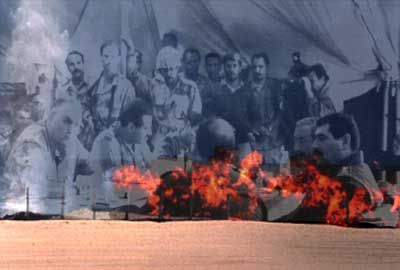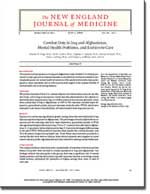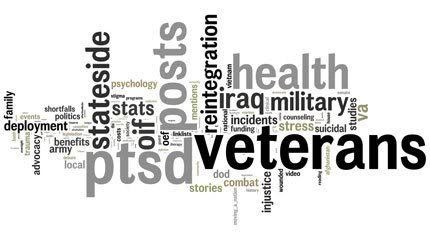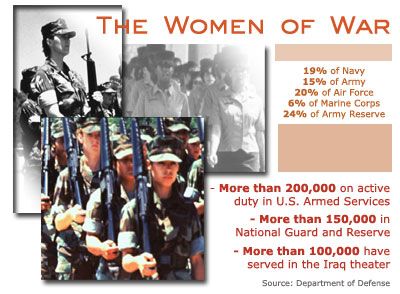
15 years ago today Desert Storm was launched. It ended 100 hours later -- on February 27, 1991. Currrent Gulf War (Operation Iraqi Freedom): 25, 700+ hours and counting...
Click on 'Article Link' below tags for more...
Related Note: Zogby International, in conjunction with Le Moyne College, has just completed a first-ever opinion poll of our combat troops serving in Iraq. The results are absolutely stunning.
This past Thursday, February 23rd, was the 15th anniversary of the start of the first Gulf War's ground war: Desert Storm. It lasted, incredibly, from start to finish 100 hours. We celebrate the end of that war tomorrow.
March 19th will be the 3rd anniversary of the start of the second Gulf War: Operation Iraqi Freedom. Although it was said that we destroyed 80% of the Iraqi army in 1991, OIF has now run 25,800+ hours and counting. We don't know when we'll be able to celebrate the end of this war. As we pay our respects to those who served, those who died, those who suffered - and suffer still - a review of the two wars is in order. Though facts and figures and numbers and stats are sterile and dry for some, they no less have a tale to tell...
DS = Desert Storm (February 23, 1991 - February 27, 1991)
OIF = Operation Iraqi Freedom (March 19, 2003 - ?)

- DS: # of coalition member countries: 34
- OIF: # of coalition member countries: 48 (at least 16 no longer participating)

- DS: # of US Troops at start of war: 500,000+
- OIF: # of US Troops at start of war: 240,000 (125,000 of that on the ground)
- OIF: # of US Troops currently deployed: 157,000

- DS: # of non-US coalition forces at start of war: 160,000+
- OIF:# of non-US coalition forces at start of war: 49,4000+ (of this 26,000 were British ground forces)

- DS: Total # of US Troops who served: 696,661
- OIF: Total # of US Troops who served: 360,000 (ground), 1,000,000 total [see note]

From Merriam Webster dictionary:
"Casualty: a military person lost through death, wounds, injury, sickness, internment, or capture or through being missing in action."
From Sourcewatch.org: Both the Pentagon and many media reports exclude wounded from their "casualty statistics". They may refer to some wounded soldiers, but then don't have a tally for them. In addition, soldiers injured in "non-hostile" circumstances aren't tallied either. Non-DOD US Government employees, e.g., State Department, aren't tallied either.

- DS: # of US killed in action casualties: 148 combat, 145 nonbattle
- OIF: # of US killed in action casualties: 2290+ [98% male. 89% non-officers; 76% active duty, 15% National Guard; 74% white, 10% African-American, 11% Latino. 22% killed by non-hostile causes. 52% of US casualties were under 25 years old. 69% were from the US Army.]

- DS: # of US wounded in action: 467 WIA
- OIF: # of US wounded in action: 16,742+ [20% of which are serious brain or spinal injuries (total excludes psychological injuries); 30% of US troops develop serious mental health problems within 3 to 4 months of returning home]

In the Persian Gulf War, about three troops were wounded in action for every fatality. In Iraq, about seven are being wounded for every one killed. - Alan Bavley in New technology and medical practices save lives in Iraq. Knight Ridder Newspapers, 17 Dec 2003.


- DS: # of US missing in action: 37 MIA
- OIF: # of US missing in action: 8 (all rescued)


- DS: # of French casualties: 2
- OIF: # of French casualties: 0
- OIF: # of Non-US/Non-British casualties: 103

- DS: # of Allied Arab casualties: 39
- OIF: # of Allied Arab casualties: 0


- DS: # of Iraqi POWs held by coalition: 80,000
- OIF: # of Iraqi POWs held by coalition: 13,000+ (as of 9/2005)

"Iraq went from the fourth-largest army in the world to the second-largest army in Iraq in 100 hours." - Lieutenant General Tom Kelly on Desert Storm

- DS: # of Allied combat air sorties flown: 116,000+
- OIF: # of combat air sorties flown (using 1,801 aircraft): 20,753 (initial invasion using 18,467 smart bombs and missiles; 9,251 dumb bombs; 153 air launched cruise missiles; 98 gps/laser-guided bombs; 408 anti-radar missiles; 908 guided cluster bombs; and other missiles)

- DS: # coalition aircraft losses: 75 (63 US/12 Allied)
- OIF: # coalition aircraft losses: 105

The oil revenues of that country could bring between $50 and $100 billion over the course of the next two or three years. Now, there are a lot of claims on that money, but...we are dealing with a country that can really finance its own reconstruction, and relatively soon. -- Former Deputy Secretary of Defense, Paul Wolfowitz, testimony to the US House Appropriations Committee, March 27, 2003


- DS: Portion of war cost financed by non-US sources: $53 billion (DOD)
- OIF: Portion of war cost financed by non-US sources: (looking for figure)

- DS: Total cost of war financed by Gulf States: $36 billion
- OIF: Total cost of war financed by Gulf States: (looking for figure...is this 0?)

- DS: Total cost of war financed by Germany and Japan: $16 billion
- OIF: Total cost of war financed by Germany and Japan: (looking for figure)

According to the Department of Defense, by 1999, the military revealed of the Gulf War:
- As many as 100,000 U.S. troops were exposed to repeated low-levels of chemical warfare agents, including sarin, cyclosarin, and mustard gases;
- More than 250,000 received the investigational new drug pyridostigmine bromide (PB pills) the Pentagon "cannot rule out" as linked to Gulf War illnesses;
- 8,000 received the investigational new botulinum toxoid (Bot Tox) vaccine;
- 150,000 received the hotly debated anthrax vaccine;
- 436,000 entered into or lived for months within areas contaminated by more than 315 tons of depleted uranium radioactive toxic waste possibly laced with trace amounts of highly radioactive Plutonium and Neptunium, almost all without any awareness, training, protective equipment, or medical evaluations; and
- Hundreds of thousands lived outdoors for months near more than 700 burning oil well fires belching fumes and particulate matter without any protective equipment.
- Each of these exposures took place while troops were either engaged in combat, serving in a war zone, or stationed in the volatile region for a number of months.

- DS: # Separated from service, eligible for VA benefits:504,047 (as of 3/01)
- OIF: # Separated from service, eligible for VA benefits: 166,334 (OEF figures included, as of 4/2005)

- DS: # Sought medical care at the VA:263,000 (as of 3/01)
- OIF: # Sought medical care at the VA: 120,000

- DS: % Filed claims against the VA for service-related medical disabilities:36% (as of 3/01)
- OIF: % Filed claims against the VA for service-related medical disabilities: 16% (as of 4/2005)

- DS: # Filed claims who are considered disabled:149,094 (as of 3/01, with 13,902 still pending at the time)
- OIF: # Listed as WIA/not RTD (Wounded in Action/Not Returned to Duty): 7,529
- OIF: # of Seriously wounded who require amputations: 6%

- DS: # Who've died following combat:9,600 (as of 3/01)
- OIF: # Who've died following combat: (undetermined)

- DS: # of Potential `reproductive toxicants' soldiers were exposed to:21 (GAO)
- OIF: # Returned from combat showing symptoms of mental health disorder: 40,000

- DS: # of Veteran children born with serious congenital defects or serious illness:67% (Dept. of Veterans Affairs)
- OIF: # of Vets already homeless: 500

Related Posts






 Let's start the week off on a good note. Let's write or call those who are working tirelessly to ensure our vets have the benefits they were promised. Take a moment today to cheer Rep. Lane Evans, Sen. John Kerry, Rep. Bob Filner, Rep. Steve Buyer, and Rep. Marty Meehan on -- and ask them what we can do to help them in their work.
Let's start the week off on a good note. Let's write or call those who are working tirelessly to ensure our vets have the benefits they were promised. Take a moment today to cheer Rep. Lane Evans, Sen. John Kerry, Rep. Bob Filner, Rep. Steve Buyer, and Rep. Marty Meehan on -- and ask them what we can do to help them in their work. 
 Have a troop serving overseas? You're probably wondering what you can do to ease their transition back to civilian life once they're home. You probably also want to do all you can to prepare yourself for that long-anticipated reunion.
Have a troop serving overseas? You're probably wondering what you can do to ease their transition back to civilian life once they're home. You probably also want to do all you can to prepare yourself for that long-anticipated reunion. Not nearly enough, but it's good to see the Congress demanding more funds be provided for the Veterans Administration (VA) than the President's 2007 budget would wish to give.
Not nearly enough, but it's good to see the Congress demanding more funds be provided for the Veterans Administration (VA) than the President's 2007 budget would wish to give. 





